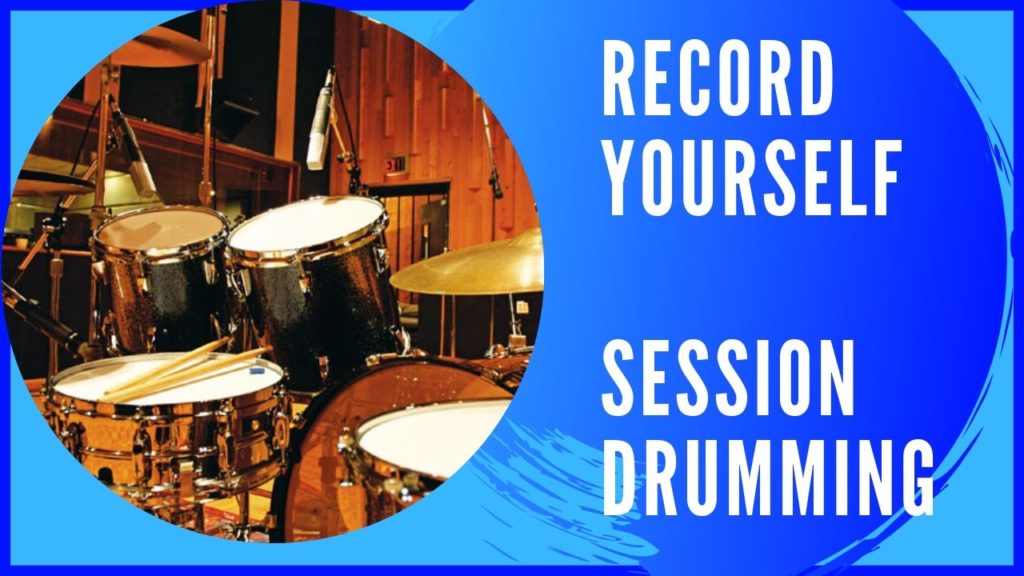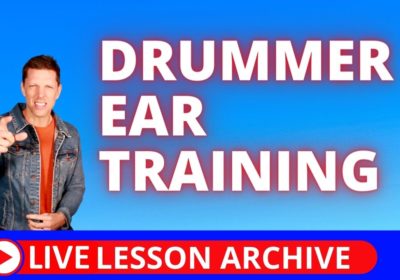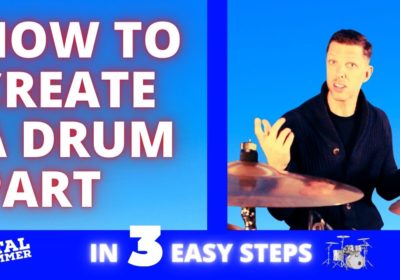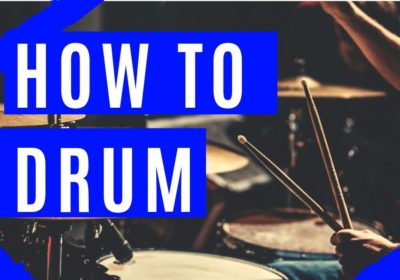Session Drumming
Record Yourself
I get lots of messages about session drumming, especially online session drumming from other drummers. I think that recording yourself is one of the best processes to help you become a better, more musical, more accurate drummer so I really encourage people to record themselves whenever possible – whether it’s part of a practice regime (as discussed in my book ’Drum Kit Secrets: 52 Performance Strategies for the Advanced Drummer (Music Secrets for the Advanced Musician)), or as part of a remote session drumming business.
Many of my students, as well as many of you guys online that send me messages, have started to amass home recording equipment so that you can record drum tracks.
I know that some of you look at recording equipment lists of big studios, or even some online session drummers and you worry that you can’t compete so you just give up.
So I wanted to write this little piece to help you focus less on the equipment that you don’t have, and more on the great results you can achieve with what you have.
When I record online session drum tracks for artists the conversation varies from client to client. Some people have the attitude of “you’re the drummer/engineer, therefore I trust you to create the best drum sound for my music” whilst others want very technical information about what equipment I use. They might wish to know which DAW I use, which preamps I have, or which microphones I use.
You might like this article on how to become a session drummer.
These are absolutely fair questions and I always make sure I answer them in full. But I also try to make a point to them which I think is important, and that is that the answer is largely irrelevant in my opinion.
My worry is that they might want it recorded in Logic and I have Cubase or vice versa, or they specifically have an idea in their head about a certain microphone and would be put off if I don’t own that mic. Sometimes their view might be based on good education and vast studio experience. But sometimes it might be based on a chat with a mate in a pub who misinformed them, or an article in Sound on Sound that they’ve taken as gospel.
The thing is that an online session drummer usually has a custom built drum recording space, he knows his own gear inside out, and he knows how to get various results from it.
In a recent Rhythm magazine article, James Hester spoke on this point saying that the recording gear accounts for only 5% of the sound. The rest comes from the drums, the drummer, and the room. So it’s funny to me that often the questions are about the technical equipment but never about me, my drums or my room.
But I suppose the big thing I try to encourage people to do is to trust their ears. Does it really matter if I’ve recorded the part with thousands of pounds worth of Neumann microphones in a world class drum live room, or recorded it with two budget microphones in my kitchen? If it sounds great then does the process or equipment count for anything at all? Of course, with more gear, and better gear, I could create a greater variety of amazing drum sounds and that’s why I have invested good money over the years to build an ever growing studio set up, but I think sometimes we get caught up in worrying about technical information.
Some of our favourite drum sounds were recorded with very few microphones – think John Bonham for Led Zeppelin with Glyn Johns in charge of engineering!
So I always say to a new client to let me record for them and then they can listen, without bias or knowledge of the recording chain. Just close your eyes and use your ears. If the tracks sounds good and the playing has captured the right vibe, then who cares how it was achieved.
The biggest thing that does help me when I’m recording a drum track is guidance on the type of sound. If someone tells me they want a John Bonham vibe then that’s really helpful as I know what sound to achieve and how to play it. I can then go about finding the right drums, tuning and recording to achieve that sound.
Someone once told me that they wanted the sound of a Pearl Export steel snare and that it had to be that. Well I don’t own a Pearl Export snare, and as a mid range snare it struck me as odd. But more so because that snare can sound very different depending on which type of drumhead is on it, how it’s tuned, which room you put it in, who is playing it, which recording equipment is used, and what processing took place afterwards. I don’t know if that guy had heard a song that he liked and had read somewhere that it was recorded on a steel Pearl Export snare. But if that was the case, it would have been much better to say to me what the song was so I had a good reference point to go away and find a method to create the same sound.
But whatever equipment you own; however many (or few) drums, whether you have one microphone or fifteen, whether you have pre-amps worth a few quid or thousands of pounds, the most important thing is to learn how to use its full potential.
Get to know your signal chain inside out. A microphone can offer very different results if moved a couple of inches, so experiment with positions to find out what results you can get. Also learn how different tunings affect your drum sounds, find out how effects such as reverb and compression can work for you, and experiment with how hard and soft you play the drums for different results.
Tuning can also be deceiving. I recently had a particular snare set up for a particular recorded sound but in the drum room it actually sounded pretty bad. It’s was quite baggy and loose, and had too much snare buzz. But through experience of experimenting, I knew that it would create just the right sound for this track when I recorded it.
So whatever equipment you have, get to know it, learn it’s strengths and limitations, use your ears, have fun, keep learning, and enjoy the process of session drumming. Afterall, every time you hit that record button and start playing, you are improving as a session drummer. So keep doing it!

FREE Timing Course
By clicking below you can gain access to a FREE ‘Drummer Timing 101’ drum course that will give you the knowledge, tools and exercises that you need to quickly get your timing up to the level it needs to be.
It will provide:
- The two main types of timing to master
- MP3 backing tracks to practice with and develop great timing
- Full sheet music for all exercises
- Video demonstrations of every exercise
And more than that you will also get a ton of other great free drum resources to make you a better drummer such as playalong tracks, articles, exclusive video lessons and more. And it’s all free!
Watch the video to get a feel for what the drummer timing 101 course entails and then scroll down to get the course immediately.
Start today and develop perfect timing
So let’s start the course today. Do it now and begin your drummer timing 101 course and start developing perfect timing. It won’t happen instantly but if you follow the lessons in the course you will start to feel the change very quickly.
If at any time you’re not digging the content, simply unsubscribe. There’s nothing to lose and your details won’t be shared with anyone, nor will you be bombarded with sales type emails. Just great free drum content that I hope provides real value for you.



